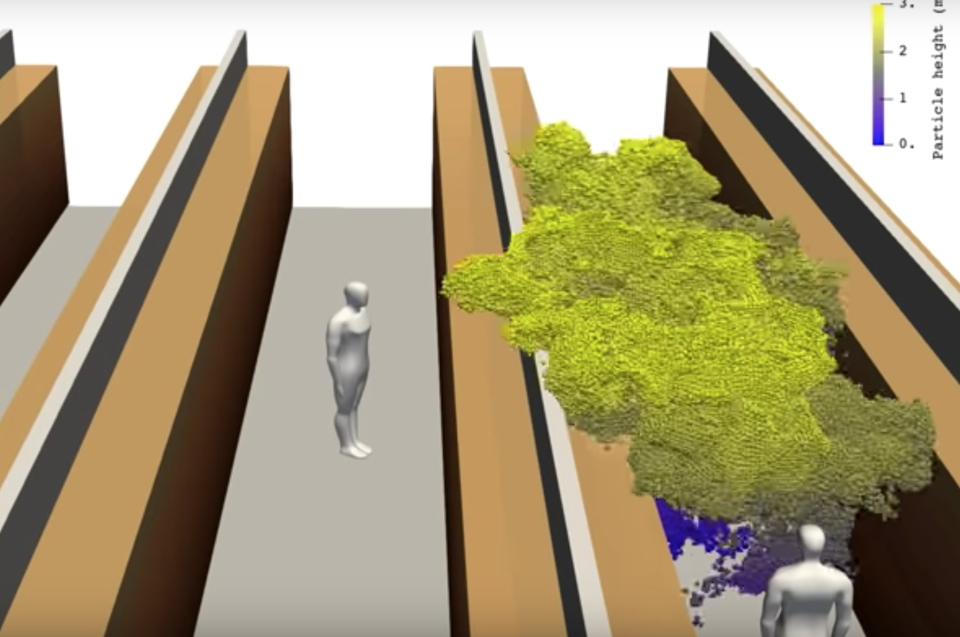Shocking simulation shows how one cough can spread coronavirus through supermarkets
Researchers have shared a terrifying simulation that shows how quickly and easily coronavirus can travel through the air in a bid to show people why it is so important to avoid busy indoor spaces.
The simulation shows how if a person coughs in a supermarket aisle, droplets from their breath can be carried across two aisles, risking infection of other people in the area.
Research carried out by Aalto University, the Finnish Meteorological Institute, VTT Technical Research Centre of Finland and the University of Helsinki modelled how particles would be transported from someone coughing or sneezing, spreading potentially-deadly COVID-19.

The researchers found that the cloud of particles produced by someone coughing or sneezing spreads away from them, diluting in the process, but that can take several minutes.
Aalto University Assistant Professor Ville Vuorinen said: “Someone infected by the coronavirus, can cough and walk away, but then leave behind extremely small aerosol particles carrying the coronavirus. These particles could then end up in the respiratory tract of others in the vicinity.”
Latest coronavirus news, updates and advice
Live: Follow all the latest updates from the UK and around the world
Fact-checker: The number of COVID-19 cases in your local area
6 charts and maps that explain how coronavirus is spreading
The project involves around 30 researchers and used a supercomputer to simulate how droplets leaving a person’s respiratory tract move through the air.
The researchers modelled the airborne movement of aerosol particles smaller than 20 micrometres — for a dry cough, a typical symptom of the current coronavirus, the particle size is typically less than 15 micrometres.

Particles of this size do not sink on the floor, but instead, move along in the air currents or remain floating in the same place.
The research backs the advice that people should avoid busy areas such as shops, restaurants and public transport where droplets can be spread easily.
Jussi Sane, chief specialist at the Finnish Institute for Health and Welfare, said: “The preliminary results obtained by the consortium highlight the importance of our recommendations.
“The Finnish Institute for Health and Welfare recommends that you stay at home if you are unwell and that you maintain physical distance with everyone.”
He added: “The instructions also include coughing into your sleeve or a tissue and taking care of good hand hygiene.
“Based on the modelling of the consortium, it is not yet possible to directly issue new recommendations. However, these results are an important part of the whole, and they should be compared with the data from real-life epidemic studies.”
Coronavirus: what happened today
Click here to sign up to the latest news, advice and information with our daily Catch-up newsletter
Watch the latest videos from Yahoo UK



